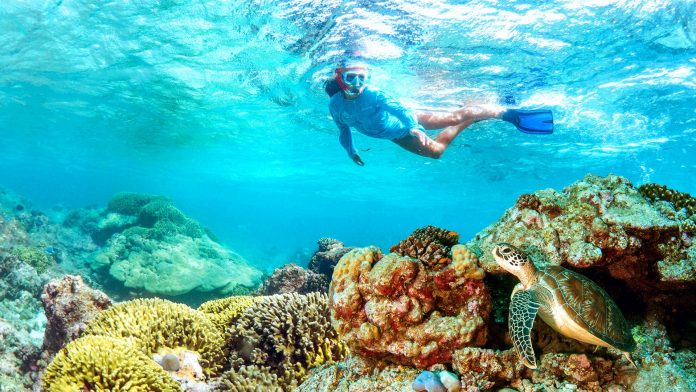Aruba is a highly demanded tourist destination with a fragile ecosystem on a very small piece of earth, covering thousands of years of human history and millions in geological terms. Our native heritage teaches us to love and value the little things of life we have when living on an island; our greatest desire becomes to protect and preserve them with all our might. Here is where our main objective comes to mind: educating our visiting readers about Aruba’s cultural heritage.
Colorful marine life, exotic fish, coral reefs, sea turtles, etc. were part of our underwater landscape that you could enjoy with simple snorkel gear. It was so common to see seashells, sand dollars, and hundreds of starfish; the red Caribbean starfish’s bright color would contrast perfectly with the sand below the blue. We did enjoy a daily biodiversity, which in recent years has suffered alarming consequences caused by the carelessness, exploitation, and ignorance of consumers.
Until recently, attention to biodiversity was focused on rain forests due to the constant discovery of new species, the potential uses of their genetic diversity, and their gradual disappearance.
Thankfully, in recent years, interest in marine biodiversity has received more attention.
Although there is no consensus among scientists about the estimation of biodiversity in general, it is recognized not only that it is essential for the survival of the human species but also that it is in serious danger due to multiple human activities. The estimates made are subject to constant changes as a result of the discovery of new species and the systematic reorganization of existing ones, as well as the increase in scientific effort, the exploration of new areas, and the incorporation of new identification and analysis technologies.
It is recognized that the marine environment contains complex and biodiverse ecosystems such as coral reefs, seagrass beds, macro algae, mangrove forests which provide essential uses and services for a large part of the human population. Based on evidence from modern and fossil records, it has been suggested that marine species tend to have consistently lower rates of extinction in both geological and ecological time.
This statement has been related to the buffer capacity of the marine environment, in which it is possible to better withstand any type of alteration, allowing marine species to tend to be less prone to extinction processes than terrestrial species. However, different factors in marine and coastal ecosystems are causing an increase in the rate of decline of species and degradation of these ecosystems, which has been reflected in diseases, local extinctions of species, the decline of some populations, and the homogenization of communities.
Human activities and unregulated exploitation have changed our submarine landscapes dramatically while diminishing the population of local species. Overfishing, pollution, the introduction of non-native species, and global changes such as climate change and ocean acidification are the main threats to marine biodiversity today. We have a dump that rolls into the sea, black waters, plastics, suntan, engine oil, and drifting garbage all along our northern coast.
Among the main pollutants affecting the ocean are oil spills, untreated sewage discharge, industrial pollutants, solid waste, and pesticides.
On the other hand, overexploitation of fishing resources leads to the local or regional extinction of many species. In coastal environments, overexploitation is the first cause of the extinction of marine biodiversity, which affects the entire ecosystem. This situation has become particularly evident in coral reefs, which are the most diverse and complex marine ecosystems and home to thousands of species.
The eutrophication of coastal waters causes blooms of green macro algae, which can damage different organisms. Harmful algal blooms float to the surface in ”foam'” and deplete oxygen in the water. Some species of algae produce toxins that alter cellular processes in other organisms, from plankton to humans. The most severe and memorable effects are the massive mortality of fish, birds, and mammals (including humans), and they have a negative impact on marine biodiversity and coastal ecosystems.
If you love to know everything about Aruba, do something off the “tourist grid” and surprise yourself by visiting Etnia Nativa, a private residential museum and unique place that introduces you to an authentic glimpse of the island’s cultural heritage.
Since 1994, Etnia Nativa has been the home of Anthony, a native artist and “Island-Insight” blogger who guides each visitor through resplendent collections from his family heritage dating back to 1640, when the Dutch occupation began. Visit it and feel the true native effect! https://www.arubatoday.com/category/columns/island-insight/
R.S.V.P. WhatsApp +297 592 2702 or mail etnianativa03@gmail.com.




















